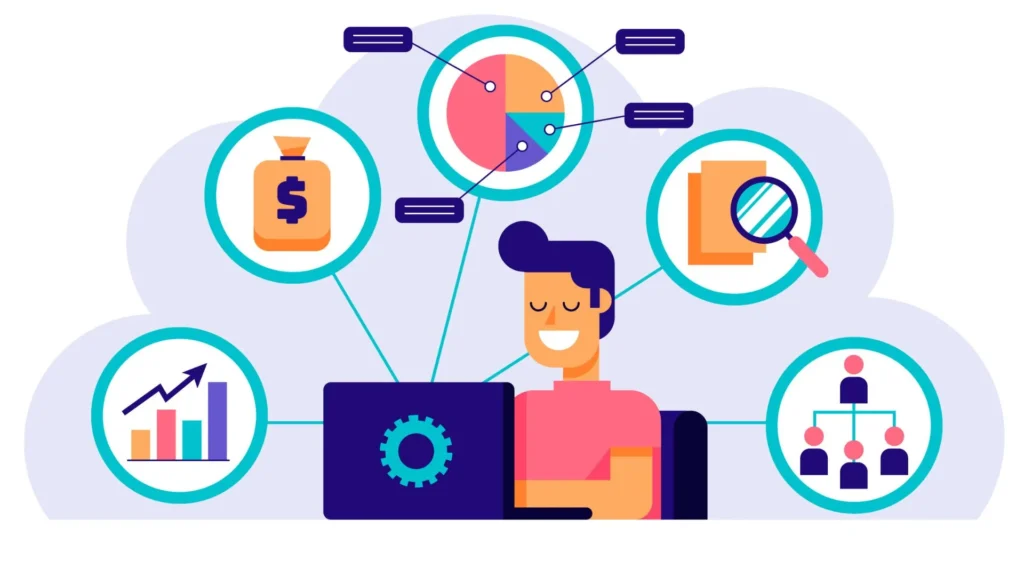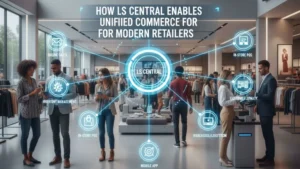In today’s fast-paced business environment, ERP downtime is more than just a technical inconvenience—it’s a direct hit to productivity, revenue, and customer satisfaction. For organizations running Microsoft Dynamics 365, Business Central, Finance & Operations, or older versions like GP, NAV, or AX, having a robust support framework isn’t optional—it’s mission-critical. That’s where a world-class Microsoft ERP Support SLA (Service Level Agreement) comes in.
A powerful SLA defines not only response times, but also responsibility, transparency, accountability, and strategic value. Whether your provider is an in-house team or an external Microsoft Dynamics Partner in USA, understanding what’s included in a high-quality ERP support agreement can help you make smarter IT decisions.
In this article, we’ll break down:
- What an ERP Support SLA really is
- The essential components of a world-class SLA
- How leading ERP Support Services in USA structure their commitments
- Why partnering with a Microsoft Dynamics Consultancy Services in USA can dramatically improve long-term ROI
- What to look for when evaluating ERP Implementation Services in USA with ongoing support options
What Is an ERP Support SLA and Why Does It Matter?
An ERP Support SLA is a contractual agreement between your organization and your support provider defining how quickly and effectively issues will be resolved. It sets expectations on:
- Response times
- Issue categorization
- Resolution timelines
- Support channels (email, phone, portal, AI chatbots, etc.)
- Escalation matrix
- Reporting and accountability metrics
Without an SLA, support becomes arbitrary and reactive. But with a structured SLA, your Microsoft ERP environment remains secure, optimized, and evolving with your business needs.
Core Components of a World-Class Microsoft ERP Support SLA
Let’s explore the key elements you should expect from premium ERP Support Services in USA or any leading Microsoft Dynamics Partner in USA.
1. Clearly Defined Support Tiers & Issue Categories
Every ERP issue is not equal. A simple “How do I update a record?” query should not receive the same priority as a financial posting failure during month-end closing. A good SLA includes:
| Priority Level | Example Issue | Expected Response Time |
|---|---|---|
| P1 – Critical | System down, data corruption, failed transactions | < 1 Hour |
| P2 – High | Major feature not functioning but workarounds exist | < 4 Hours |
| P3 – Medium | Performance lag or integration interruption | < 1 Business Day |
| P4 – Low | User queries or enhancement requests | < 2 Business Days |
Leading Microsoft Dynamics Consultancy Services in USA follow ITIL-aligned ticketing structures to ensure fair prioritization across departments.
2. Guaranteed Response & Resolution Timelines
Response time is when your support provider acknowledges the issue—resolution time is when they actually fix it. A world-class SLA clearly commits to both.
✅ Example Commitment from Top ERP Support Services in USA:
- Acknowledgment time for P1 issues: Under 15 minutes
- Resolution time for P1 issues: Under 4 hours or temporary workaround provided
If your provider only mentions “response time,” they may leave you waiting for actual fixes. Always insist on both.
3. 24/7 Support Availability (If Needed)
If your operations span multiple time zones or include eCommerce, logistics, or manufacturing workflows, round-the-clock support is non-negotiable. A future-ready SLA includes:
- Global coverage (USA, EMEA, APAC)
- Multiple support channels (live chat, phone, email, portal)
- Automated status notifications
Many Microsoft Dynamics Partners in USA offer follow-the-sun support models to ensure continuous availability.
4. Proactive System Monitoring & Preventive Maintenance
Reactive support alone is outdated. World-class SLAs now include:
✔ Automated health checks
✔ Patch & update management
✔ Integration monitoring
✔ Security audits and threat response
Rather than waiting for something to break, leading Microsoft Dynamics Consultancy Services in USA actively prevent incidents before they impact business.
5. Functional & Technical Support (Not Just Bug Fixing)
True ERP optimization requires more than resolving technical errors. Your SLA should also cover:
- Functional support: Workflow issues, configuration assistance, user training
- Technical support: SQL/database issues, performance tuning, customizations
- Integration support: Power BI, Power Apps, third-party connectors
Not all ERP Implementation Services in USA provide functional consulting under support—double-check before signing.
6. Dedicated Account Manager & Escalation Matrix
Fast issue resolution requires accountability. Your SLA must include:
- A dedicated account manager or customer success lead
- Named escalation contacts (L1 → L2 → L3 → Solution Architect → Microsoft if needed)
- Scheduled governance meetings (monthly/quarterly reviews)
This structure ensures transparency and continuous improvement rather than transactional support.
7. Customization & Change Request Management
Most organizations customize Microsoft ERP at some level. Therefore, the SLA must define:
- How change requests are recorded
- Approval workflows for new reports, fields, or automations
- Impact analysis timelines
- Cost structure for minor vs. major enhancements
Top-tier Microsoft Dynamics Partners in USA often provide bundled enhancement hours with premium SLA tiers.
8. SLA Penalties & Performance Reporting
A strong SLA includes measurable KPIs like:
- Average Response Time
- First Contact Resolution Rate
- Mean Time to Recovery (MTTR)
- Customer Satisfaction Score
You should receive monthly or quarterly performance reports. Some elite providers even include penalty clauses if SLA targets are consistently missed.
9. Strategic Advisory & Roadmap Planning
A world-class SLA goes beyond break-fix services. It helps future-proof your ERP investment by including:
- Solution optimization suggestions
- Upgrade/migration recommendations
- AI/automation enablement roadmaps
- Licensing and compliance guidance
The best Microsoft Dynamics Consultancy Services in USA operate as long-term partners—not just support vendors.
Comparing Support Options: In-House vs. Microsoft Dynamics Partner in USA
| Criteria | In-House IT Team | External Microsoft Dynamics Partner in USA |
|---|---|---|
| Cost | High (recruitment, training, infrastructure) | Scalable and subscription-based |
| Expertise | Limited to internal exposure | Cross-industry best practices |
| Scalability | Challenging during peak loads | On-demand resource expansion |
| Upgrades & Innovation | Slow adoption | Faster access to new features |
Most mid-sized and enterprise businesses choose hybrid or fully outsourced ERP support models for efficiency and flexibility.
How ERP Implementation Services in USA Bundle Support with Deployment
Smart organizations negotiate support before the implementation begins. Many ERP Implementation Services in USA offer tiered support extensions such as:
- Post-Go-Live Hypercare (30-90 days)
- Yearly Support Contracts with SLA Commitments
- Pay-As-You-Go Incident Packages
- Dedicated Resource Augmentation Options
Be cautious: Some low-cost implementers provide minimal support post-launch, forcing businesses to scramble later. Always demand official SLA documentation before signing any implementation contract.
Q 1: What is the difference between response time and resolution time in an ERP SLA?
Ans: Response time is how quickly the support team acknowledges your issue, while resolution time is how long it takes to fix or mitigate the problem.
Q2: Do all Microsoft ERP SLAs include proactive monitoring?
Ans: Not necessarily. World-class SLAs include automated health checks, patch management, and preventive measures, while basic SLAs may only offer reactive support.
Q3: Can an ERP support SLA cover functional consulting?
Ans: Yes. Premium Microsoft Dynamics Consultancy Services in USA include functional support like workflow assistance, user training, and business process optimization.
Qns4: Are SLAs only for critical issues?
Ans: No. SLAs categorize issues by priority (Critical, High, Medium, Low), ensuring response times and resolution expectations for all types of incidents.
Q5: How do SLAs help during ERP upgrades or migrations?
Ans: SLAs often include support for system upgrades, migrations, and new feature adoption, ensuring minimal downtime and smoother transitions.
Q6: What happens if the provider fails to meet SLA commitments?
Ans: Many top-tier ERP Support Services in USA include penalties, credits, or corrective action plans if SLA targets are consistently missed.
Q7: Is 24/7 support necessary for all businesses?
Ans: Not always. If your operations are limited to one region and normal business hours, extended hours may be optional. Global operations or critical systems usually require 24/7 coverage.
Final Thoughts
A Microsoft ERP system is the nervous system of your organization. If it slows down, everything slows down. If it crashes, business stops.
That’s why you need more than just a support vendor — you need a reliable Microsoft Dynamics Partner in USA capable of offering strategic, proactive, SLA-driven support that evolves with your growth.
Whether you’re evaluating ERP Support Services in USA, onboarding ERP Implementation Services in USA, or switching from an underperforming partner — always ensure your SLA includes:
✅ Fast, guaranteed response & resolution times
✅ Proactive monitoring & preventive maintenance
✅ Functional + technical assistance
✅ Strategic advisory support
When done right, an SLA isn’t just about fixing issues — it’s about maximizing ERP ROI while keeping your operations secure, efficient, and future-ready.



